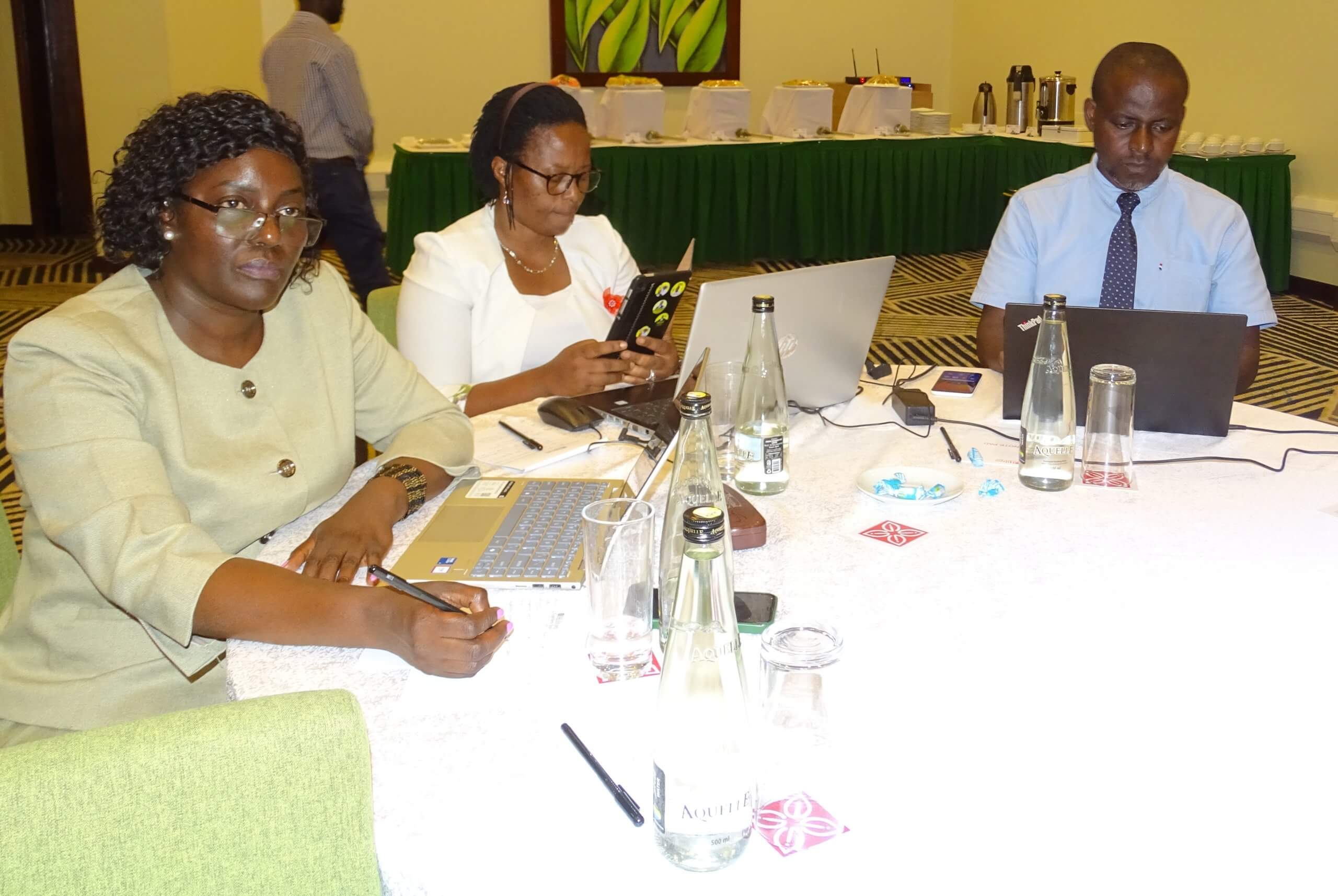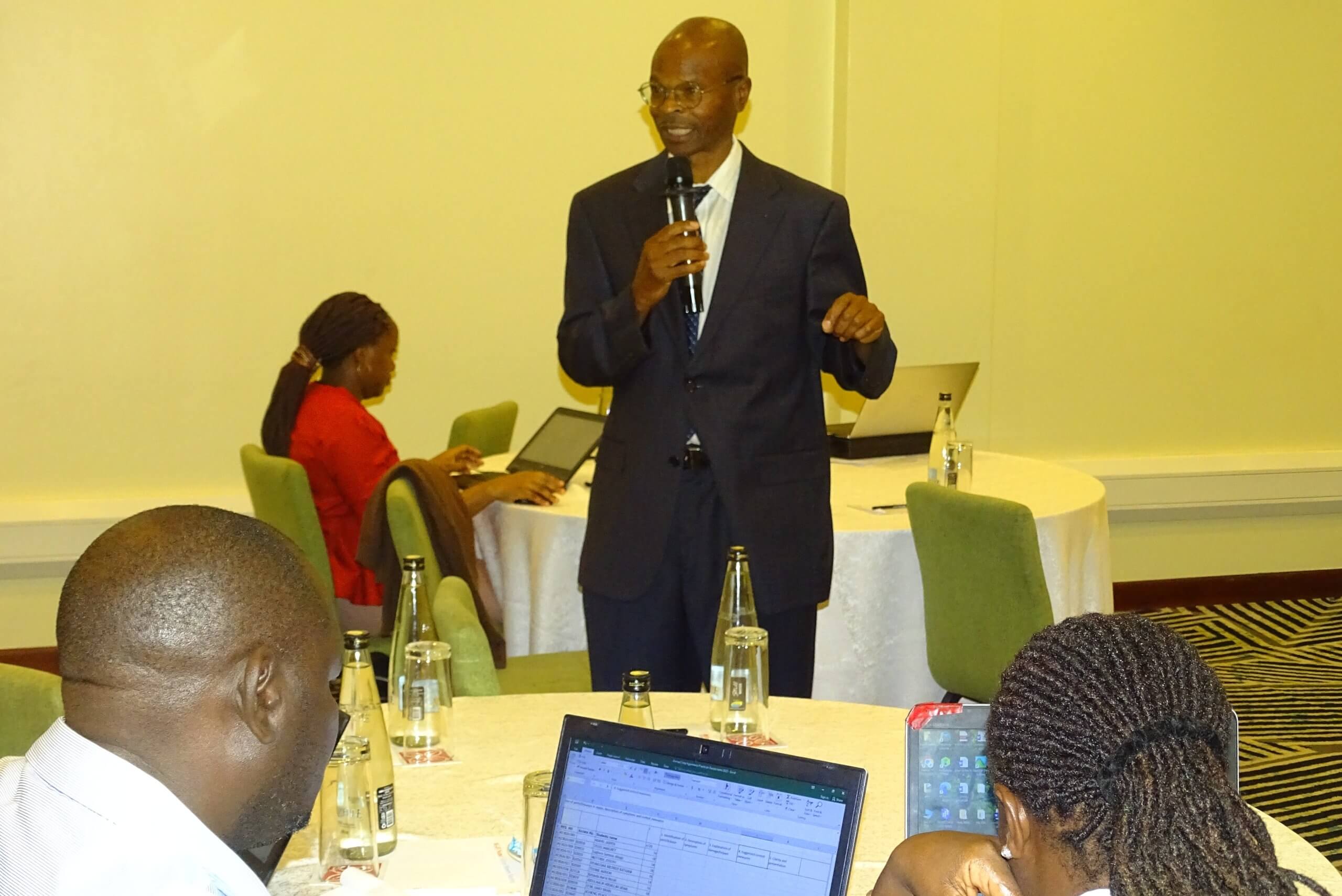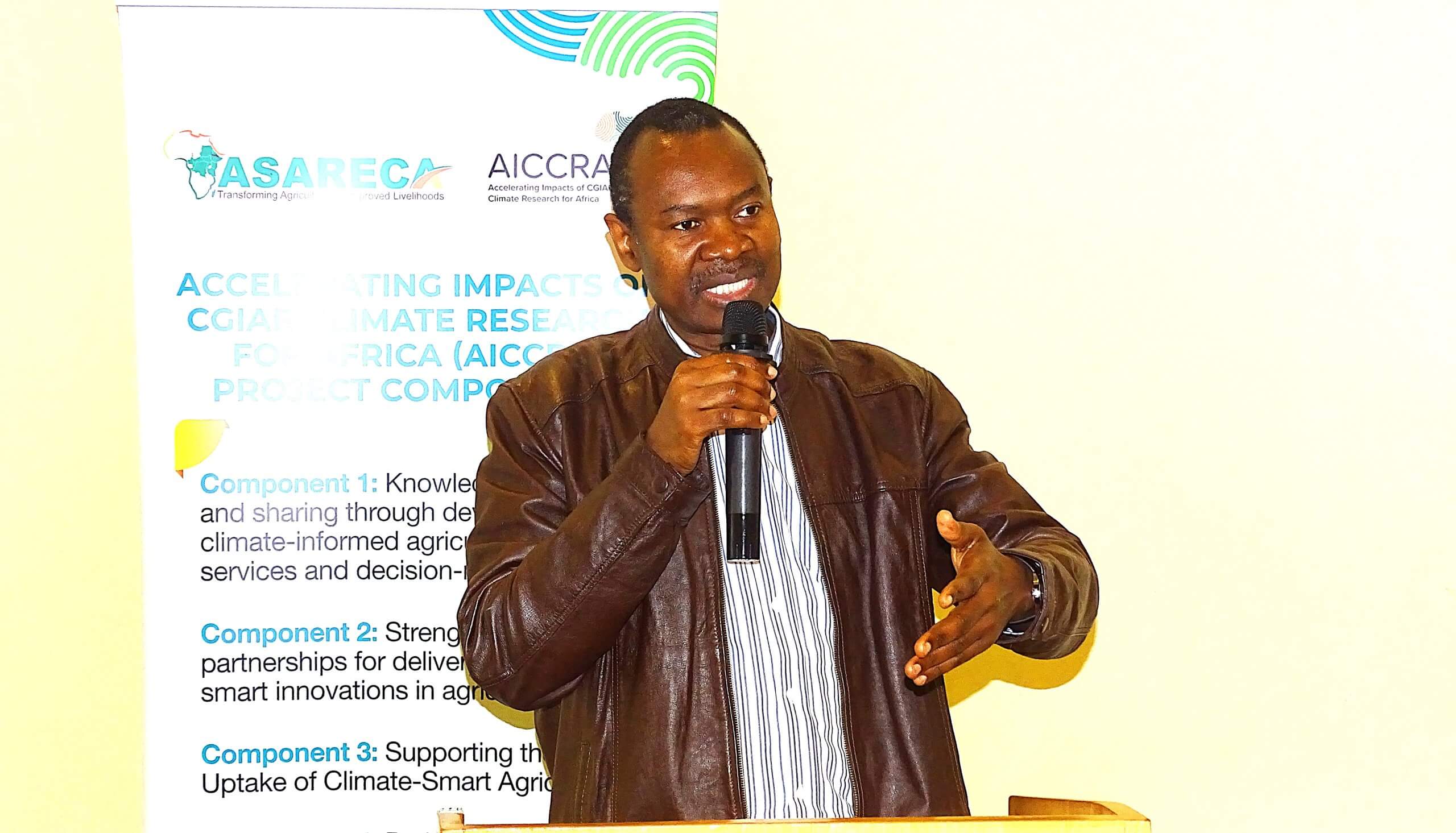Game-changing tool to predict crop potential introduced to Uganda by ASARECA and CGIAR partners
BY BEN MOSES ILAKUT
KAMPALA, UGANDA: The introduction of a tool meant to enhance the capacity of researchers to predict crop performance viz-a-viz climatic conditions has placed Uganda in a favourable position to transform how farmers, policymakers, and agribusinesses respond to increasingly unpredictable weather patterns.
Known as the Climate Smart Agriculture Crop Capability Prediction Tool, the noble tool collects long-term seasonal forecast data, to derive very close estimations on the performance of various crops under varied climate forecast scenarios. The information can then be used to inform on-farm decisions ranging from crop type, crop variety and seed quantity to be planted to minimize potential losses while maximizing returns under the prevailing seasonal conditions.
A negation of fire-fighting methods
The tool is a negation of the traditional early warning systems that operate in a reactionary mode after a hazard has struck. Its introduction on the Continent was a demand driven culmination and search for a mechanism that could translate seasonal and sub-seasonal climate forecasts into actionable agricultural management advice, allowing for anticipatory actions and long-term strategic planning.

ASARECA CGIAR quest for Climate Smart solutions
To introduce this tool, ASARECA and the Accelerating Impacts of CGIAR Climate Research for Africa (AICCRA) Project (https://aiccra.cgiar.org/), held a Training of Trainers on Enhancing Forecasting Capacities and Developing Crop Capability Prediction Models/Tools from September 22 to 26, 2025 at Hilton Garden Court Hotel in Kampala, Uganda.
The week-long training assembled Ugandan crop scientists, climate experts, agricultural researchers, extension workers, and policymakers to learn how to integrate seasonal climate forecasts with crop capability models for more resilient food systems. It is designed to be passed-on, meaning trained experts will mentor colleagues in their respective institutions. This approach aims to establish a pool of Ugandan specialists capable of generating regular, evidence-based advisories for farmers and decision-makers.

What the training set out to achieve
The overall objective of the training was to enhance capacities of climate scientists, agrometeorologists and policy makers in utilization of the crop capability prediction tools. The specific objectives included: Strengthen the capacities of stakeholders in seasonal climate forecast-driven crop capability prediction; strengthening the platform for collaboration by key stakeholders involved in the production and application of timely climate information; provide hands-on exercises on modified Climate-Agriculture Modelling and Decision Tool (CAMDT) and the Decision Support System for Agrotechnology Transfer (DSSAT) crop yield prediction model using Ugandan data for strategic provision of appropriate inputs to the agriculture and food security sector; provide the crop capability prediction tool to benefit policymakers and the user community for use in agriculture and early warning systems; and provide a user guide for the modified CAMDT for use within institutions as appropriate.
Genesis of crop capability prediction tool explained
According to Mr. Bradwell Garanganga an expert in climate information services and climate modelling, working with the African Climate Policy Centre (ACPC), CAMDT, DSSAT were developed as a response to the effects of climate change and emergency disasters on agricultural productivity in sub-Saharan Africa. Specifically, the CAMDT tool was triggered by extreme climate events which devastated Southern Africa, mainly Zimbabwe, Mozambique and Malawi in 2019. They were introduced during meetings convened by the United Nations Economic Commission for Africa (UNECA) to provide African countries with advanced, climate-informed tools to combat threats to food security. The adoption of the tool was driven by three main factors: the increasing impact of climate change on African agriculture, a growing demand for reliable agricultural early warning systems, and the need for new technologies to address decision-making challenges. “This tool has the potential to save billions of dollars in avoided crop losses across Africa,” said Mr. Bradwell J. Garanganga, the expert from Digitron Business Systems. “It allows farmers, governments, and cooperatives to make evidence-based decisions—whether that means switching seed varieties, reducing land under cultivation, or stocking up on animal feed before a drought.”

Training pioneered CCARDESSA countries
The training in ASARECA sub-region comes after the tool was introduced in Southern Africa through ASARECA sister sub-regional organization, Centre for Coordination of Agricultural Research and Development for Southern Africa (CCARDESA) and (AICCRA, focusing on building capacity in climate forecasting and crop yield prediction.
Alignment to national, regional and global goals
Dr. John Recha, ILRI Climate Smart Agriculture and Policy Scientist informed participants at the training that the tool is meant to increase crop productivity and enhance food and nutrition security in Eastern Africa. Uganda is the first country in region to receive this unique training. “The training aligns with the AICCRA, ASARECA, CGIAR, and World Bank objectives of combating effects of climate change through Climate Smart Agriculture which entails increasing agricultural productivity and income; adapting and building resilience to climate change; and reducing or removing greenhouse gas emissions,” he said.

He also explained the deliberate effort of consortium partners to use CSA priority actions to contribute to multiple Sustainable Development Goals (SDGs), particularly those related to Food Security (SDG 2) by increasing productivity and improving nutrition; Climate Action (SDG 13) through reduced greenhouse gas emissions and enhanced resilience to climate shocks; Poverty Reduction (SDG 1) by boosting rural incomes; and Life on Land (SDG 15), by preserving natural resources and increasing carbon sequestration.
Scanning the eco-systems for tested solution
ASARECA Programme Officer for Policy, Ms Julian Barungi highlighted that ASARECA partners are constantly identifying, customizing and supporting member countries to adapt proven technologies to address issues affecting farmers in Eastern and Central Africa. “The push to disseminate the crop capability prediction tool is driven by our realisation of the increasing impact of climate change on African agriculture, a growing demand for reliable agricultural early warning systems, and the need for new technologies to address decision-making challenges,” Ms Barungi explained. “The training facilitates climate smart agriculture through knowledge generation and sharing using climate-informed agricultural advisory services and decision-making tools; strengthening partnerships for delivery of climate-smart innovations in agriculture; and validating climate-smart agriculture innovations through piloting proven innovations.”

Participants react
Participants fully converged on the huge potential that the tool opens up in the application and utilization of seasonal weather forecasts, dissemination of weather information, impact-based forecasting and ultimately evidence-based decision making. In deep-dive discussions on factors that may affect the adoption of the tool, participants observed the need to take deliberate steps to customise the tool to Uganda’s context were critical. To ensure effective adoption, the participants who are mainly drawn from Uganda’s Department of Meteorological Services, Ministry of Agriculture, Animal Industry and Fisheries, and the National Agricultural Research Organization among others, also provided possible technical limitations that could slow down adoption of the tool for possible modification before deployment of the tool, as well as considered approaches to influence the adoption of the tool at policy level.
They recommended adoption of a more user-friendly web-based interface of the tool benefiting from current web resources including AI; integration of more crops than currently modelled in the system; expansion of parameters of modelling to include more agricultural inputs as well as expand the scope of users beyond meteorologists to include agricultural research scientists and extension workers among others.
